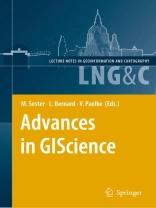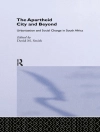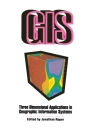The Association of Geographic Information Laboratories for Europe (AGILE) was established in early 1998 to promote academic teaching and research on GIS at the European level. Since then, the annual AGILE c- ference has gradually become the leading GIScience conference in Europe and provides a multidisciplinary forum for scientific knowledge prod- tion and dissemination. GIScience addresses the understanding and automatic processing of geospatial information in its full breadth. While geo-objects can be represented either as vector data or in raster formats these representations have also guided the research in different disciplines, with GIS researchers concentrating on vector data while research in photogrammetry and c- puter vision focused on (geospatial) raster data. Although there have – ways been small but fine sessions addressing photogrammetry and image analysis at past AGILE conferences, these topics typically played only a minor role. Thus to broaden the domain of topics the AGILE 2009 con- rence it is jointly organized with a Workshop of the International Society of Photogrammetry and Remote Sensing (ISPRS), dedicated to High Re- lution Satellite Imagery, organized by Prof. Christian Heipke of the Le- niz Universität Hannover. This collocation provides opportunities to explore commonalities – tween research communities and to ease exchange between participants to develop or deepen mutual understanding. We hope that this approach enables researchers from the different communities to identify common – terests and research methods and thus provides a basis for possible future cooperations.
Jadual kandungan
Identification of Practically Visible Spatial Objects in Natural Environments.- Extraction of Features from Mobile Laser Scanning Data for Future Driver Assistance Systems.- Automatic Revision of 2D Building Databases from High Resolution Satellite Imagery: A 3D Photogrammetric Approach.- Accuracy of High-Resolution Radar Images in the Estimation of Plot-Level Forest Variables.- Assessment of Solar Irradiance on the Urban Fabric for the Production of Renewable Energy using LIDAR Data and Image Processing Techniques.- Enhancing 3D City Models with Heterogeneous Spatial Information: Towards 3D Land Information Systems.- Matching River Datasets of Different Scales.- An Approach to Facilitate the Integration of Hydrological Data by means of Ontologies and Multilingual Thesauri.- Applying Instance Visualisation and Conceptual Schema Mapping for Geodata Harmonisation.- Transferring Segmented Properties in the Conflation of Transportation Networks.- Detecting Hotspots in Geographic Networks.- Estimating Spatio-Temporal Distribution of Railroad Users and Its Application to Disaster Prevention Planning.- Rasterizing Census Geography: Definition and Optimization of a Regular Grid.- Towards Semantic Interpretation of Movement Behavior.- Three-Valued 9-Intersection for Deriving Possible Topological Relations from Incomplete Observations.- Modeling Land Use Change: A GIS Based Modeling Framework to Support Integrated Land Use Planning (Naban Frame).- Monitoring System for Assessment of Vegetation Sensitivity to El-Niño over Africa.- A Storage and Transfer Efficient Data Structure for Variable Scale Vector Data.- Line Decomposition Based on Critical Points Detection.- Generalization of 3D Buildings Modelled by City GML.- 3D Wayfinding Choremes: A Cognitively Motivated Representationof Route Junctions in Virtual Environments.- Towards Geovisual Analysis of Crime Scenes – A 3D Crime Mapping Approach.












